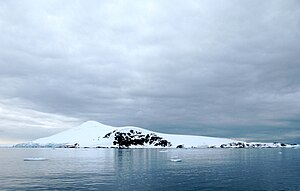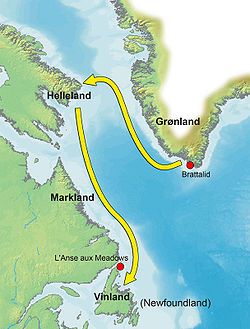|
William Hovgaard
William Hovgaard (1857 – 1950) was a Danish-born American academic who specialized in studying naval architecture and shipbuilding at the Massachusetts Institute of Technology until his retirement in 1933. Hovgaard was one of the foremost authorities on ship design in his generation, especially on the general and structural design of warships. He wrote several books on naval design and construction and the history thereof, but also on a diversity of other subjects, and he received a significant number of orders, awards and merits during his life. His brother was Royal Danish Navy officer Andreas Peter Hovgaard, who led an Arctic survey expedition to the Kara Sea on the steamship Dijmphna from 1882 to 1883.[1] Life According to Hovgaard's National Academy of Sciences biographical memoir,[2]
In 1912 he helped organize the American-Scandinavian Foundation, New York City, and was a Trustee and Vice-President until his death. He was a member of the American Academy of Arts and Sciences, American Geographical Society, Institute of the Aeronautical Sciences, National Academy of Sciences (elected in 1929), Institution of Naval Architects (London), American Society of Naval Architects and Marine Engineers, United States Naval Institute, American Mathematical Society, American Association of University Professors, Society for the Advancement of Scandinavian Study, American Society of Danish Engineers, and the Massachusetts Historical Society. In 1928 he was an Invited Speaker of the ICM in Bologna.[3] Hovgaard wrote a number of books and scientific articles on a number of subjects. Pertaining to his warship expertise, he wrote Structural Design of Warships[4] (1915) and General Design of Warships and Modern History of Warships (1920). Books by Hovgaard on other subjects include The Voyages of the Norsemen to America[5] (1914) where he comments on this subject-matter based on his knowledge of ships and navigation. He comes to the conclusion that Leif Ericsson reached the south coast of Cape Cod. Hovgaard wrote,
In 1962 William Francis Gibbs commented on Hovgaard's 1944 book The United World. [7]
At his death he had for some years been working on a new theory of cosmology, but it remained unfinished.[8] Career Hovgaard graduated from the Royal Danish Naval Academy at age 21, and next served as a sub-lieutenant and later as a lieutenant in the Royal Danish Navy. He later attended the Royal Naval College, Greenwich, from which he graduated in 1887. He worked for some years for Burmeister & Wain, before attaining the rank of commander in the Royal Danish Navy. He next transferred to the Massachusetts Institute of Technology, working as a professor, teaching courses such as Warship Design, Theory of Warship Design, and History of Modern Warship Construction. In 1915 Hovgaard served as an expert witness after the sinking of RMS Titanic (later he would also give testimony on the RMS Lusitania). Later he served as vice-president in The American-Scandinavian Foundation. In 1929, he was appointed to the Department of Commerce's Committee on Ship Construction, and later the same year he became a full member of the National Academy of Sciences. Hovgaard retired in 1933, but continued to be active as a scientist and naval authority for many years. In 1934 he addressed the American Academy of Arts and Sciences in Boston regarding "Fundamentals of the Theory of Relativity". In 1937 Hovgaard was honored at a luncheon at the Astor Hotel, under sponsorship of the American Society of Danish Engineers, the Danish Officers' Club, and the Danish Luncheon Club. A letter read at the luncheon from a US naval official noted that 85 percent of the officers in the Navy's construction corps were Hovgaard's former students, and that every one of the Navy's ships currently docked at New York Harbor was constructed under the supervision of his former pupils.[9] Selected bibliography Books on Naval Architecture
Books on Non-Naval Architecture Subjects
Articles
Other
Honours and awards
See also
References
External links
|
||||||||||||
Portal di Ensiklopedia Dunia
